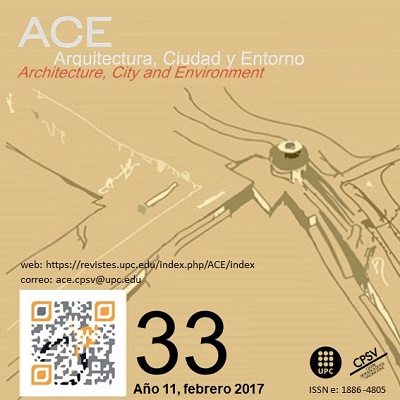Using HTML5 technology to build an online visualization tool for accessible routing in urban spaces
DOI:
https://doi.org/10.5821/ace.11.33.5138Keywords:
Accessibility, Web Application, Itineraries, GeolocationAbstract
Despite the location and route planning capacity of mobile devices, there are significant shortcomings regarding route planning according to the needs of people with accessibility difficulties.
This paper discusses the development of a web application to visualize optimal routes for these users using HTML5 technology with open source tools. The development strategy iterated several cycles of coding and assessment, allowing the adjustment of functionality and usability in the early stages.
The result is compatible with desktop and mobile platforms because of the adoption of web standards, such as the <canvas> element and the Geolocation API. Through the web application, easily embeddable in a webpage, users can select a point in a map (using the mouse or touchscreen) and the most suitable accessible route from that point to a fixed element of interest in a map is shown and (optionally) overlaid on the Google Maps cartography.
Additionally, if the device is on the area shown on the map, its approximate position is displayed. The resulting application simplifies both the planning of the route and the on-site orientation, and is also valuable as a visual validation tool during the development of the optimal route model.
Downloads
Published
Issue
Section
License
| INTELECTUAL PROTECTION CRITERIA |
At this moment, it is count with the "Oficina Española de Patentes y Marcas", while global protection it is being processed by the World Intelectual Property Organization (OMPI/WIPO). Nevertheless the International Standard Serial Number Office (ISSN) has given the following numbers ISSN: 1886-4805 (electronic version) and 1887-7052 (paper version). All articles will be peer reviewed, using double blind reviewing. |
| COPYRIGHT |
The article contents and their comments are authors exclusive liability, and do not reflect necessarily the journal editor commitee's opinion. All ACE published works are subject to the following licence CC BY-NC-ND 3.0 ES http://creativecommons.org/licenses/by-nc-nd/3.0/es/ It implies that authors do not hold nor retain the copyright without restrictions but only those included in the licence. |





































